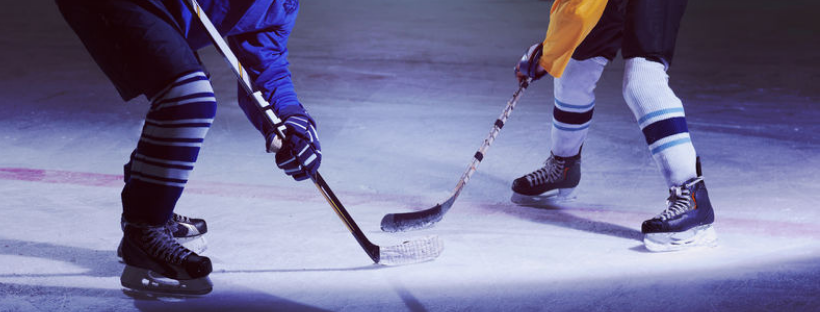Strength and conditioning specialists generally recommend hockey players improve strength, power, and agility in the off-season and work on maintenance throughout the season.
During the off-season, athletes should be focusing more on power, strength, agility, and hypertrophy than during the regular season. Building up strength and gaining mass is crucial as more players not only have highly developed technical skills, but are also becoming stronger and more aggressive. This doesn’t mean creating a workout routine centered on powerlifting and bodybuilding, but it does mean incorporating sets of heavy compound workouts such as squats, deadlifts, cleans, snatches, and bench press in a low-rep range (4-6) in order to gain strength, power, and size.
Athletes should also include higher rep work during the off-season. By incorporating both low- and high rep exercises, the body is constantly shocked, forcing it to become bigger and stronger.
When the season begins, athletes should train lighter and more sparsely than they would in the off-season. This doesn’t mean skipping off-ice workouts altogether. Research suggests that performance drastically wanes if an athlete discontinues off-ice workouts. Simply going to practice and games will not sustain the strength built up during the off-season without an off-ice workout routine.
Research suggests that a 2-3 day/week off-ice training regime can help athletes maintain the performance they gained during the off-season. Training should include mid-rep-ranges (8-12) rather than the extremes of training in the off-season. Specific exercise routines should focus on athletes’ leg power with quad and hamstring specific movements, as well as push/pull exercises for the upper body, and sport-related core movements: Single-leg squats, sled-pushes, planks, trap bar deadlifts, and box jumps are all great in-season exercises that activate these muscle groups. It’s also essential to incorporate mobility work and static and dynamic stretching in order to prevent and rehabilitate injuries.
Athletes should not be adding in new training techniques, nor should they overtrain muscles they previously neglected during the season. Completely overhauling a workout routine or training a specific muscle group at a much higher intensity mid-season can lead to an injury or sluggish performance on the ice. Shocking the body with new routines and high-intensity is something best left for the off-season.
The key is to maintain a high level of strength, agility, and endurance throughout the whole year. The largest increases in strength should be made during the off-season. Athletes need to maintain as much strength as possible during the season while putting the majority of their focus towards on-ice performance.

